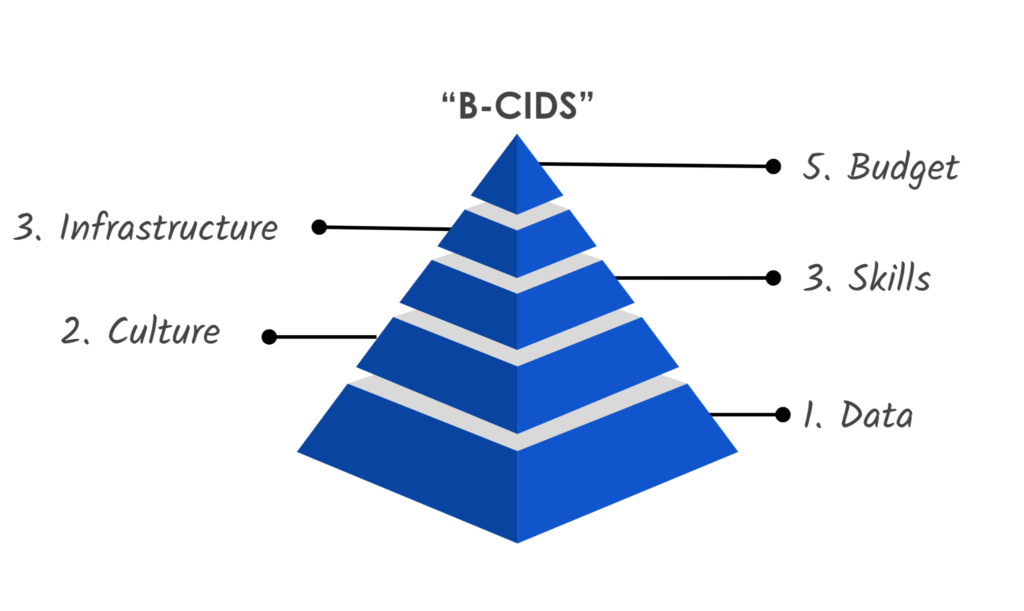Why Every Business Needs A successful AI Strategy?
With every passing moment, vast volumes of data are collected, and companies are striving to leverage this data to enhance their operations and fulfill business objectives. The progress of AI and machine learning technologies empowers businesses to reshape industries through heightened flexibility, predictability, and insights derived from unstructured data. Nowadays, breakthroughs in extensive language models and generative AI, like GPT models, can add greater value by helping employees in their everyday tasks.
For any AI initiative, an investment of time, money, and expertise is necessary for implementation. In the year 2022, companies worldwide spent $45.8 billion in financing AI projects. To validate such expenditure, businesses must gauge the potential business value and impact of the solution before making investments. Goldman Sachs anticipates that generative AI by itself could augment the global GDP by 7% (equivalent to nearly $7 trillion) and drive up productivity growth by 1.5% over the forthcoming decade. This potential elevation in business expansion and prosperity certainly grabs attention.

Leaders must understand the problems they’re addressing, ensuring that their creation of AI tools isn’t merely for the sake of having them. This approach can result in minimizing outcomes and raising barriers that impede expansion, ultimately leading to the failure of initiatives. In fact, studies show that as much as 60% to 80% of AI projects end in failure. Despite the increasing investments and adoption of AI, a McKinsey study reveals that there hasn’t been significant progress in reducing AI-related risks.

This idea that technology is a one-size-fits-all solution is termed “technological solutionism,” a phrase coined by technology critic Evgeny Morozov. According to Evan Selinger, a philosophy professor at Rochester Institute of Technology, technological solutionism generates a false belief that we can make remarkable headway in resolving intricate issues—maybe even completely solving them—by simplifying their fundamental complexities into manageable engineering challenges.
When businesses believe AI can tackle any challenge, they might easily get caught up in the trend of technological solutionism. This happens because the idea of a universal fix is reassuring and financially appealing.
Formulating an AI strategy before diving into a new solution improves the chances that upcoming AI ventures will actually deliver on their commitment to creating business value. A comprehensive AI strategy also reduces the risk of falling into the trap of technological solutionism, reinforcing the overall investment and enabling companies to effectively address real problems using their tools.
The Most Common Mistakes To Avoid
The main barrier to driving growth and enhancing productivity is time. Businesses, along with their leaders and employees, often abandon ideas due to limited time and resources. This is where AI steps in: offering fresh, effective methods to work and cutting down on mundane tasks through automation. In simple terms, AI has the power to revolutionize operations. Successfully implementing AI opens up new revenue streams for businesses, boosting profit margins and maximizing return on investment.
However, companies frequently adopt too many tools simultaneously. AI isn’t a “set it and forget it” software; hastily embracing the latest solutions can mean you’re not fully capitalizing on your investment. Additionally, the effectiveness of AI hinges on the quality of the data used. Data that lacks detail or is insufficient will diminish AI’s value. This can lead to unsatisfactory outcomes that undermine the investment in AI tools and solutions, making it crucial to source and verify data correctly.
Navigating this challenge involves countless applications for AI within a business. Business leaders often face the dilemma of where to kickstart this journey. A clear roadmap is crucial—one that uncovers chances for automation throughout the entire value chain. Without it, the prospect of future AI investment becomes uncertain. By adopting a strategy that centers on solving specific issues, businesses can lay the groundwork for swiftly creating and implementing AI solutions.
The Best Path Forward
Organizations that achieve the highest AI returns generally adhere to best practices in strategy, data, models, tools, technology, and talent. By devising a plan that distinctly prioritizes AI initiatives connected to business value throughout the company, organizations can concentrate on projects based on their relative effort and expected return on investment (ROI).
In addition to exploring opportunities across the entire value chain, today’s AI frontrunners also aim for a more advanced implementation that integrates automation with other restructuring methods, such as policies, roles, and company-wide practices. By doing so, each new AI project can potentially produce a clear outcome for the organization, thereby justifying more investment in additional AI endeavors to key stakeholders, including the C-suite and the board.

A comprehensive AI strategy should include architectural guidance and best practices, helping employees in crafting and utilizing robust solutions tailored to their needs. Offering AI training ensures employee buy-in to this novel technology, empowering them to champion its adoption throughout the organization. Consequently, many employees perceive AI as a remedy to enhance job satisfaction. UiPath recently conducted a survey involving over 6,400 global workers, revealing that 58% of respondents believe AI-powered automation can alleviate burnout and enhance job fulfillment.
Also Read This: 10 Mind-Blowing AI Tools Everyone Should Be Trying Out Now
AI can help employees in reducing workloads, acquiring new skills, and fostering collaborative opportunities. As employees are upskilled, organizations witness a significant and positive impact on their workforce’s capabilities. When employees extend their automation prowess beyond the basics, the company can explore opportunities beyond mere cost savings. These possibilities enable organizations to implement automation in customer service, product launches, and broader aspects of the customer journey through these newfound digital avenues.
With technology’s swift progression, businesses can’t afford the strategic integration of AI. Even if your organization hasn’t begun investing in AI solutions, there’s still an opportunity to harness its benefits.
Yet, expanding AI throughout the company demands a well-defined technology deployment strategy. Instead of rushing into the latest fad, collaborate with your executive team to craft a distinct vision, investment plan, and goals for AI. This approach will foster streamlined operations for both employees and customers, ultimately enhancing efficiency.



![[Infographic] How B2B Companies are Using IoT to Drive Business Value?](https://alliedc.com/wp-content/uploads/2015/04/IoTIndustryApplications-2-150x150.jpg)



